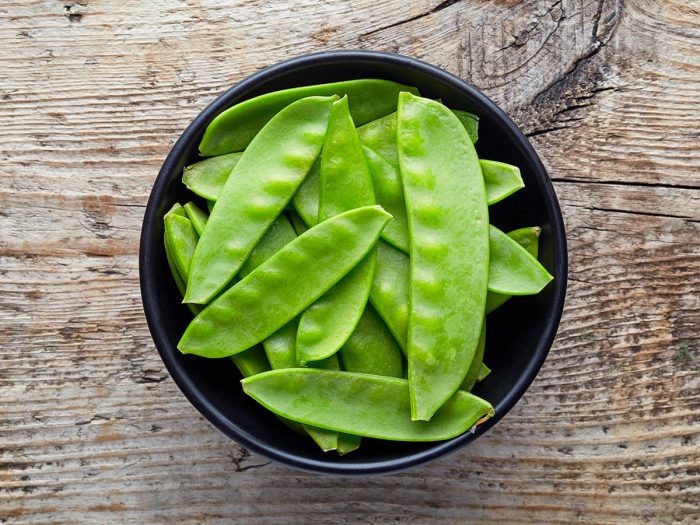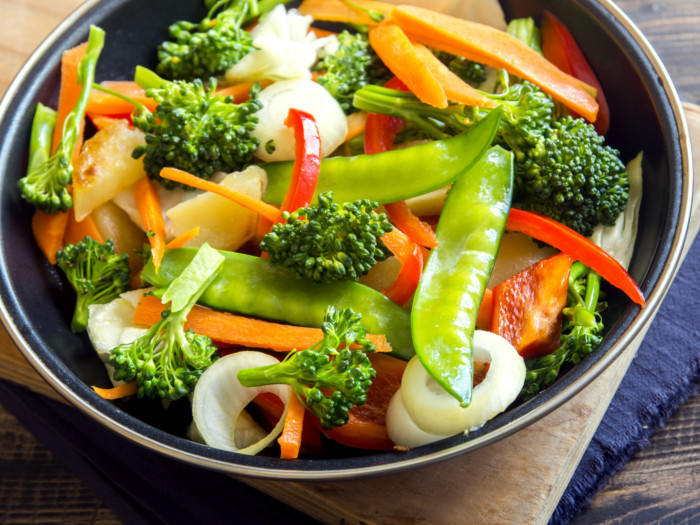If you’ve ever been served a bowl of snow peas, you may not be sure how to eat them, nor what makes them different from normal peas. These are nutritious and surprisingly flavorful vegetables that are used in the preparation of several global cuisines. Therefore, so it is important to understand what they contain, what potential health benefits they possess, and how to store and prepare them.
What are Snow Peas?
Snow peas, a variety of pea, are eaten whole – while the peas are still in the pod. Unlike regular peas, the pods of snow peas do not contain inedible fiber, meaning that they are more palatable and not meant to be discarded. These pods are also a source of good nutrients. Scientifically known as Pisum sativum var. saccharatum, [1]these peas are not only popular in Chinese cuisine, but they are popular around the world and are relatively easy to find in most grocery stores and import shops.
Each seedpod contains up to seven peas, and these peas can be cooked or eaten raw. Most people remove them from their garden in an unripe form, which is when they are tender, yet still crunchy. They take very little effort to prepare, and can be added to many meals, or simply munched on for a protein-rich snack!
Snow Peas Nutrition

Boil snow peas and add butter and lemon to them for a delicious snack. Photo Credit: Shutterstock
In terms of their nutrient content, snow peas are packed with vitamin A, vitamin C, iron, potassium, dietary fiber, magnesium, folic acid, and small levels of healthy fats. These pods are also very low in calories, with slightly over 1 calorie per pod. They also lack cholesterol, making them a filling, yet nutritious dietary component. [2]
Snow Peas Health Benefits
There are many impressive health benefits of snow peas, including weight loss, improved heart health, reduced constipation, stronger bones, optimized immunity and lower levels of inflammation, among others.
May Aid in Weight Loss
These delicious little pods are possibly high in dietary fiber and densely packed with valuable nutrients, which makes them quite filling. However, they have an extremely low level of fat and calories, so you can eat these vegetables without any guilt about ruining your diet or going over your calorie allotment for the day. The fiber will also help your digestive system and improve your metabolic speed, further helping with weight loss efforts. [3]
May Help Manage Diabetes
Possibly high levels of dietary fiber in the body mean more control over your blood sugar levels. Fiber is a type of carbohydrate, but it regulates the glucose and insulin levels in your body. This is particularly important for people with diabetes, who need to watch their intake of simple sugars and closely monitor their blood sugar levels to prevent sudden spikes and drops. [4]
May Improve Digestion
If your diet has suitable levels of dietary fiber, which snow peas provide, you can optimize your digestive processes. Fiber can stimulate peristaltic motion, improve nutrient uptake efficiency, and reduce inflammation in the gut that can lead to stomach discomfort. [5]
May Improve Bone Mineral Density
Snow peas have various minerals that are needed by the body to increase bone mineral density, such as iron, potassium, and manganese, among others. Although these minerals are found in small amounts, they can help lower your risk of osteoporosis. [6]
May Improve Immune System
Vitamin C is one of the most important nutrients in your diet, as it can help to stimulate the production of white blood cells, an important line of defense for the body’s immune system. This will lower your susceptibility to various infections and foreign pathogens. [7]
May Improve Vision
Vitamin A is a critical element in our vision health, as this potentially antioxidant vitamin can prevent oxidative stress in the retina. This means a lower risk of macular degeneration and a slowdown in the development of cataracts. [8]
How to Cook Snow Peas?
If you want to cook snow peas, the easiest way is to simply sauté them in a pan with oil and seasoning. This will retain most of the nutritional value and boost the flavor, yet it only takes a few minutes to prepare. Since these peas can also be eaten raw, they don’t require much cooking to be tender and delicious.

Garlic Snow Peas Stir Fry Recipe
Ingredients
- 20-25 snow pea pods
- 1 garlic clove minced
- 1 tbsp olive oil
- 1 tbsp water
- 1 tsp salt
- 1 tsp black pepper
- 1 lemon wedge
Instructions
- First, you will have to prep the snow peas for cooking. Snap off the stems of snow peas and remove string on the seam. Wash them under running water and pat them dry.
- Warm the olive oil in a frying pan or skillet.
- Add garlic and sauté it till the aroma gets released. Then, add the snow peas, salt, and black pepper.
- Stir fry the vegetable on medium-high heat for 3-4 minutes. You can sprinkle water to help soften them.
- Turn off the heat. Squeeze lemon juice on the snow peas and mix well. Enjoy!
- You can also add onions and peppers to the snow peas stir fry to make a hearty meal.

How to Store Snow Peas?
Snow peas don’t have a long shelf life, so after purchasing or picking these peas, you can store them in your refrigerator for 2-3 days before the quality will begin to diminish. After 2-3 days, the peas will have less of a crunch, and their slightly sweet flavor will also begin to disappear.
Snap Peas vs. Snow Peas
Snap peas are often mistaken for snow peas, but in fact, snap peas are a cross between snow peas and garden peas. This hybrid is closer in appearance and flavor to snow peas but tends to be sweeter. Also commonly known as sugar-snap peas, these are eaten in the pod (whole) and have the same tough string along the seam of the pod that should be removed before eating. [9]
